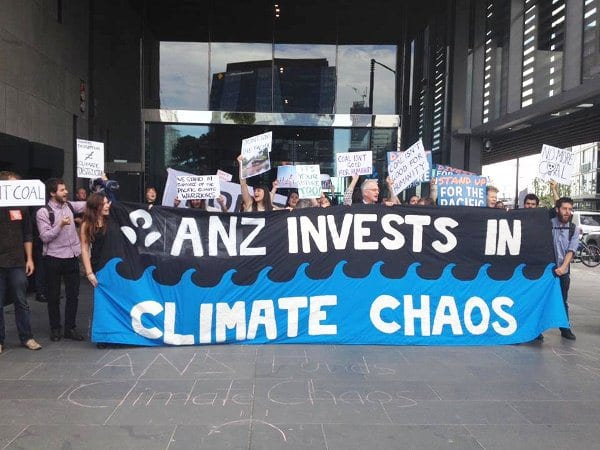ANZ Bank has released a suite of revised climate change commitments that include $10 billion in new lending for greenhouse gas reductions and stricter rules for lending to coal power projects.
According to a report in the Financial Review on Tuesday, the new rules ban lending to new coal plants that don’t use the latest clean coal technology – whatever that may be – and limit lending to existing coal plants, according to some fairly malleable conditions.

The release coincides with the publication of a draft UN climate pact ahead go the Paris COP21 in December, which, ANZ concedes will “probably” result in a new global agreement, probably with stricter limits on greenhouse gas emissions.
“We want to be in a position where we can actively support the commitment made by governments and also work actively with our clients as well,” ANZ global head of Credit & Capital Management, Kevin Corbally, said in an emailed statement on Tuesday.
But with that, Corbally adds the usual caveat that the bank’s revised policies, rules and standards must also reflect that coal still provides around 40 per cent of the world’s electricity needs.
“Credible global future energy scenarios including the International Energy Agency forecast that coal will continue to comprise a significant share of the energy mix in the short to medium term,” he said.
Indeed, as one of the most fossil-fuel exposed of Australia’s Big Four banks, ANZ will be banking on such forecasts. In that, it doesn’t much differ from the Abbott government’s emission reduction discussion paper and its energy white paper – both relied on the IEA’s new policies scenario, where the 2C targets are not met.
Meanwhile, its new rules don’t preclude it from investing in the development new coal mines, such as the controversial and much maligned Carmichael mega-coal mine and port expansion in northern Queensland, which ANZ has, conspicuously, failed to rule out.

Consequently, some industry watchers are not impressed by the ANZ’s new climate policy.
“The announcements made today by ANZ on climate change are almost satirical in their ineffectiveness, actually creating space for the bank to worsen its climate footprint over time,” said Julien Vincent, the lead campaigner for Market Forces.
“We urgently need to see leadership from the finance sector in driving our economy to a low-carbon footing,” he added, “ANZ has just declared itself out of the leadership race.”
Vincent notes that the new rules still give the ANZ’s huge scope for fossil fuel investment, including: lending to new coal-fired power stations that have the worst emissions intensity of the latest coal power technology; lending to new and existing coal mines anywhere around the world; and continued investment in any current coal fired power stations provided there is a plan in place to cut emissions beyond the plant’s lifetime.
“While the commitment to finance $10 billion of emission reductions efforts by customers over five years is welcome,” Vincent said, “when this is put in perspective of a global renewable energy industry that has attracted over $US1 trillion of investment over the same time span, it’s fair to expect that most banks would lend this sort of money to emissions-reducing efforts as a matter of routine.
“ANZ is Australia’s biggest lender to the fossil fuel industry, having loaned $12.6 billion to coal, oil and gas projects since 2008.
“For every dollar the bank lends to renewable energy, it lends another $6 to fossil fuels. ANZ was involved in more than half of the deals to fossil fuel projects in Australia since 2008, making it not just the biggest, but also most prevalent lender to coal, oil and gas.”








